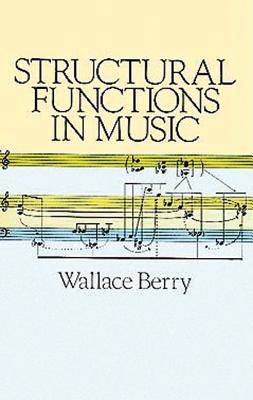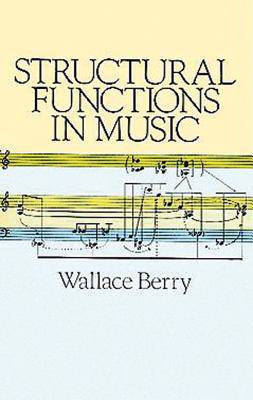
- Afhalen na 1 uur in een winkel met voorraad
- Gratis thuislevering in België vanaf € 30
- Ruim aanbod met 7 miljoen producten
- Afhalen na 1 uur in een winkel met voorraad
- Gratis thuislevering in België vanaf € 30
- Ruim aanbod met 7 miljoen producten
Omschrijving
This brilliant inquiry into tonal, textural, and rhythmic structures in music, filled with original formulations and provocative ideas, has become one of the most widely read and studied works in music theory, frequently adopted in college and university curricula, and often cited in scholarly studies in the field.
Starting from an all-encompassing viewpoint -- a belief in the importance and necessity of logical analysis of the musical experience, and the study of objective data derived therefrom -- it moves toward a deeper understanding of musical structure and experience through a systematic exploration of tonality, melody, harmony, and rhythm, and their important interrelations. These are illuminated in penetrating analyses of musical works and extracts ranging from early model styles to modern compositions.
The procedures by which structural elements in nearly all music function expressively are analyzed in depth. Tonality is examined in a Gregorian chant, a Bach motet, a Beethoven symphony, a Bartók string quartet, and other works by Wolf, Ravel, Webern, and Berg. Texture is explored in a Gesualdo madrigal, a Telemann fantasy for violin, and works by Bach, Brahms, and Dallapiccola. Works by Beethoven, Chopin, and Webern are subjects for revealing studies of rhythm and meter.
A model of original thought, this book has now become one of the most influential works in musical analysis, an invaluable resource for musical scholars and students of musical theory, a lively stimulus to individual theoretical exploration.
Specificaties
Betrokkenen
- Auteur(s):
- Uitgeverij:
Inhoud
- Aantal bladzijden:
- 480
- Taal:
- Engels
- Reeks:
Eigenschappen
- Productcode (EAN):
- 9780486253848
- Verschijningsdatum:
- 1/07/1987
- Uitvoering:
- Paperback
- Formaat:
- Trade paperback (VS)
- Afmetingen:
- 137 mm x 215 mm
- Gewicht:
- 485 g

Alleen bij Standaard Boekhandel
Beoordelingen
We publiceren alleen reviews die voldoen aan de voorwaarden voor reviews. Bekijk onze voorwaarden voor reviews.











